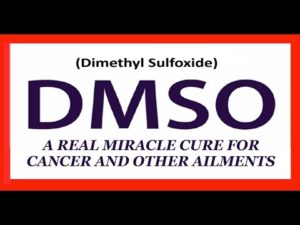
What exactly is DMSO? It’s mainly a byproduct of the lumber industry. The history began in 1961, with Dr. Jacob who was head of an organ transplant program in Oregon. He was looking for a preservative for organs when he noticed how it penetrated into tissue.
Or the history began in Germany in the late 19th century as a byproduct of the paper making industry. Take your pick.
Many years later and trying to get DMSO introduced into the medical community to be used for various ailments, the FDA blacklisted it, most likely because they considered it “snake oil”. However, there were others that pursued the medicinal qualities of DSMO eventually bringing this somewhat miraculous solvent from the lumber industry into the mainstream medical community.
But just what is DMSO and how it applicable to cancer? The list is turning out to be endless, to say the least. While holding the title as an amazing newcomer in various therapies, the claims about the healing powers are a bit stretched. Currently the research is mostly positive about applications in medicine and various treatments.
Yes. It has been known to cure, YES CURE, certain diseases and medical conditions. Just not everything. Which is what quite a few internet websites would have you believe. Here are some of the more promising uses:
Therapeutic Properties of DMSO
16 Major Therapeutic Properties of DMSO: Referenced from “DMSO, Nature’s Healer” by Dr. Morgan Walker pages 50 and 152:
1 – It blocks pain by interrupting the conduction in the small c-fibers, the nonmyelinated nerve fibers.
2 – It is anti-inflammatory.
3 – It is bacteriostatic, fungistatic, and virostatic.
4 – It transports numerous pharmaceuticals across membranes.
5 – It reduces the incidence of platelet thrombi in blood vessels.
6 – It has a specific effect on cardiac contractility by inhibiting calcium to reduce the workload of the heart.
7 – It stimulates prostaglandin synthesis – cyclical fatty acids that possess diverse biologic activities that affect cell function in every organ system. PGs have sedative and anticonvulsive effects on the central nervous system.
8 – It enhances antifungal and antibacterial agents when combined with them.
9 – It is a vasodilator, probably related to histamine release in the cells and to prostaglandin inhibition.
10 – It inhibits the release of cholinesterase.
11 – It tends to soften collagen by its peculiar cross-linking effect.
12 – It scavenges the hydroxyl free radical.
13 – It stimulates various types of immunity.
14 – It is a potent diuretic, especially when administered intravenously.
15 – It brings about interferon formation in the organism.
16 – It stimulates the healing of wounds.
And it also is reported to slow the progression of cancer on it’s own or in combination with chemotherapy. It been said to penetrate the protein shield of a cancer cell and remove the nutrients from it, leaving the cell weak. It’s also known to stimulate the immune system.
There are so many uses to list them all would be impossible in this post. What I can say is I’ve been using it for myself to relieve various aches and pains. Has it worked? You betcha! At least for me. I’m able to sleep better for sure after applying a small amount. I’m not advocating you try it, just saying I have.
There is a downside to DMSO to watch for. Besides the potential for a garlic like smell to be emitted from your body after using it, since it’s a very powerful solvent anything on your skin will get pushed into your body, including any nasty chemicals in your body lotions, soaps etc. You should not let anything touch the area after applying as well to prevent the DMSO from adding another unwanted hitchhiker. Yes. It’s that strong. Currently some uses are to help deliver medications directly to your system by bypassing the oral route.
I am looking forward to continued discoveries regarding this amazing byproduct of lumber.






